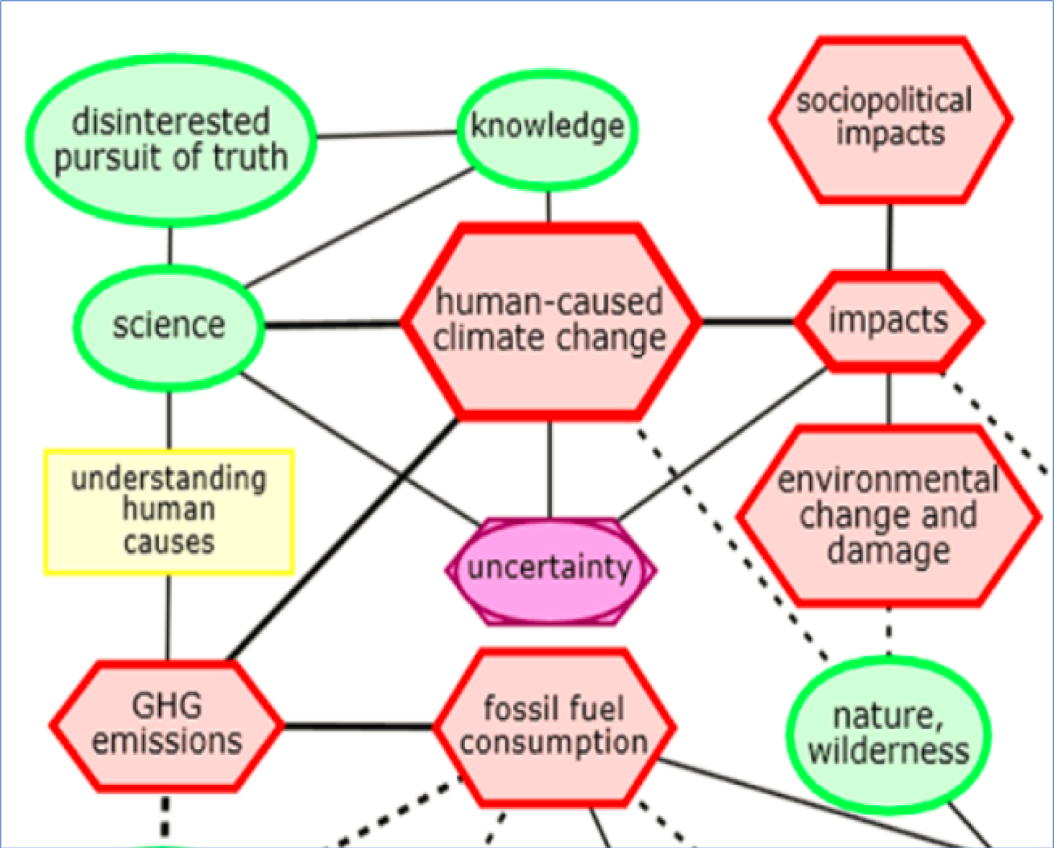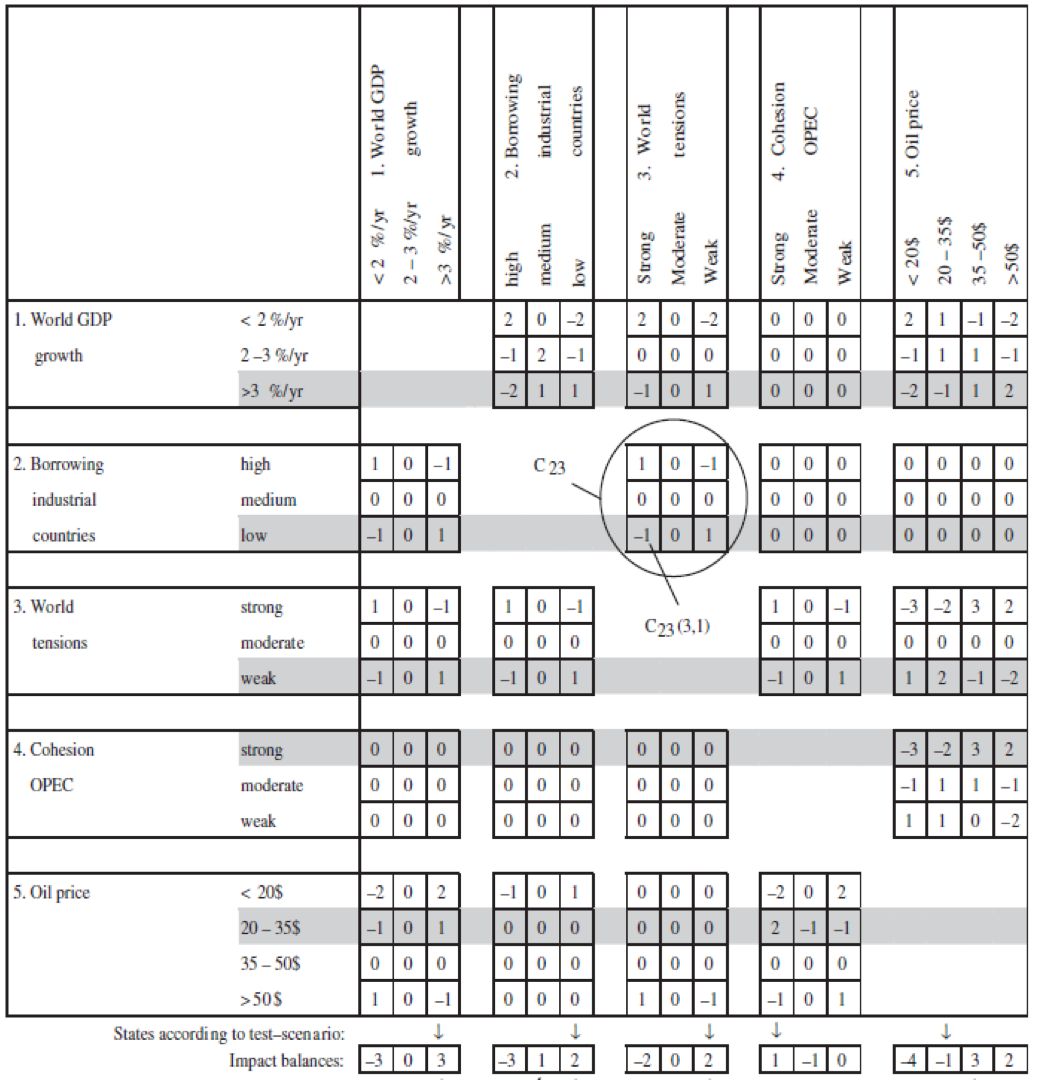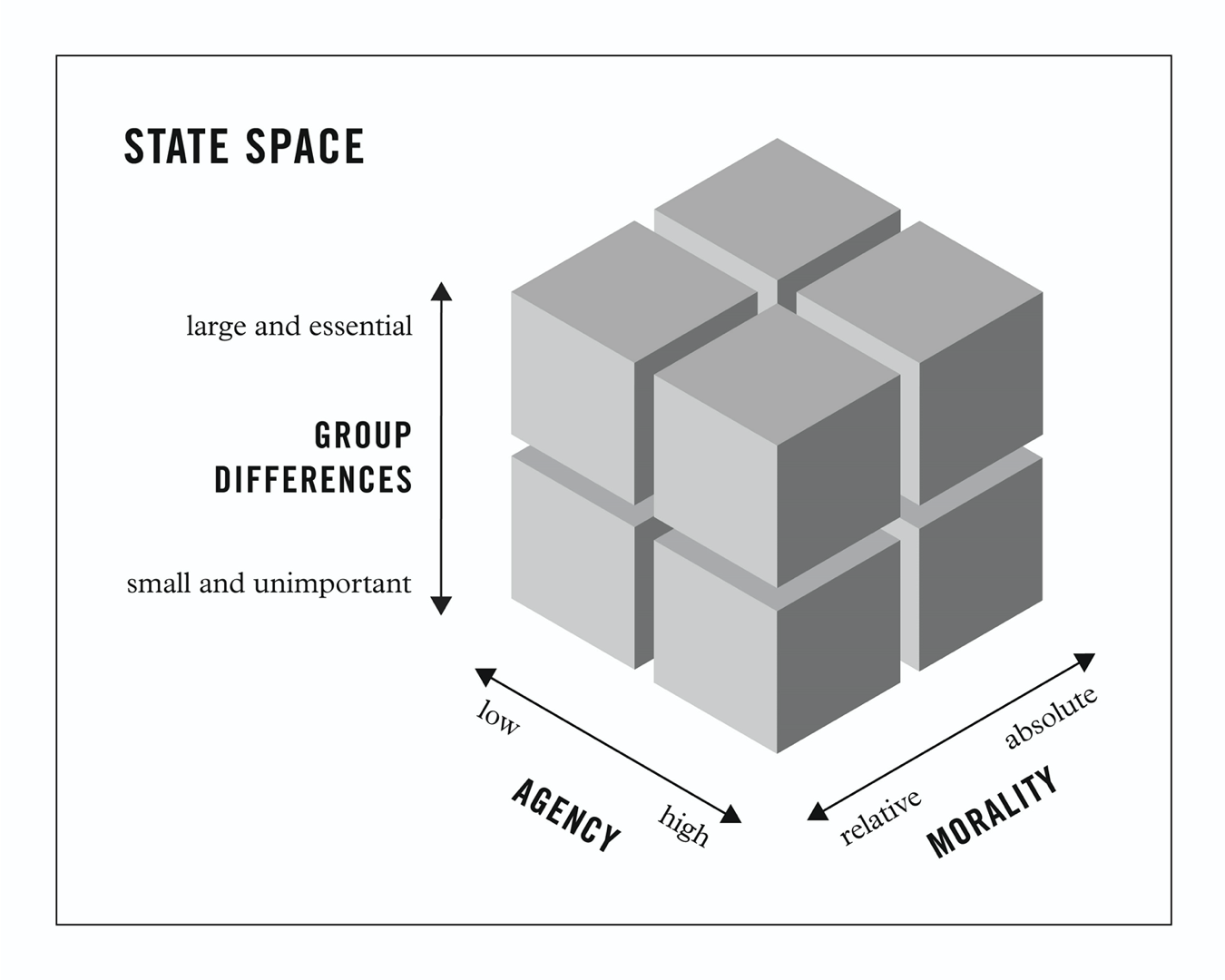METHODS FOR SYSTEM MAPPING
The Cascade Institute’s researchers have pioneered the development of several methods for mapping the causal structure and mechanisms of complex social systems. The Institute’s researchers combine these methods to understand opportunities for intervention in dominant WIT (worldview, institution, and technology) systems.
Two of these methods—Boolean causal loop analysis and cross-impact balance analysis—help reveal a system’s underlying causal processes, including its synergistic interactions and feedback loops (both positive and negative) that can lead to sudden transitions (“tipping points”) between equilibria. Three other methods—cognitive-affective mapping, ideological state space modeling, and assemblage mapping—help reveal the structure of people’s worldviews and the psychological and social mechanisms of rapid belief transformation.
1. Causal mapping
1. Causal mapping
Boolean causal loop analysis (BCLA)
References:
Ludvig von Bertalanffy, “The history and status of general systems theory,” The Academy of Management Journal 15, No. 4 (1972): 407–426.
Vladimír Bureš, “A Method for Simplification of Complex Group Causal Loop Diagrams Based on Endogenisation, Encapsulation and Order-oriented Reduction,” Systems 5, No. 46 (2017), doi: 10.3390/systems5030046.
Jaegwon Kim, “Causes and Events: Mackie on Causation,” The Journal of Philosophy 68, No. 14 (22 July 1971): 426-441.

Cross-impact balance (CIB) analysis
This method, formulated originally by Wolfgang Weimer-Jehl of the University of Stuggart in Germany and further developed by Vanessa Schweizer of the University of Waterloo, allows researchers to formalize a qualitative description of a complex social system, which in turn allows the researchers to model the system’s evolution over time and responses to interventions. It takes as inputs a representation of the causal relationships operating within a given system (perhaps in the form of a BCLA, see above) or the beliefs of experts about that system’s causal mechanisms. It then disaggregates these hypothesized mechanisms into pair-wise (bivariate) relationships, showing whether and how each system component is believed to directly affect other individual components. The pair-wise relationships are then encoded in a cross-impact table that reveals indirect system influences, including interaction effects and positive and negative feedbacks. The method can be used to produce influence diagrams, causal-chain analyses, and plausibility rankings of scenarios. It can identify: 1. a system’s stable configurations (i.e., system attractors) and the degree of their stability, 2. the system’s overall stability landscape, and 3. the location of any given system state on that landscape. As an algorithmic method, it records mental models transparently, so it can be used to settle disputes over what scenarios for the system should be deemed plausible and why.
Reference:
Vanessa Schweizer and Elmar Kriegler, "Improving environmental change research with systematic techniques for qualitative scenarios," Environmental Research Letters 7 (2012): 044011, doi:10.1088/1748-9326/7/4/044011.
Wolfang Weimer-Jehle, “Cross-impact balances: A System-Theoretical Approach to Cross-Impact Analysis.” Technological Forecasting & Social Change 73 (2006): 334-361, doi: 10.1016/j.techfore.2005.06.005.
2. Socio-cognitive mapping
2. Socio-cognitive mapping
This method, formulated originally by Paul Thagard of the University of Waterloo and further developed by Cascade Institute researchers, generates diagrams—called "cognitive-affective maps” (or CAMs)—of the concept network that a person or group uses to represent a specific subject, such as another individual or group or an issue in dispute. In the network, each concept is assigned a positive or negative emotional valence, and the types of links between concepts indicate whether the valences are directly or inversely correlated. The result is a detailed image of a system of emotionally charged concepts that can assist in-depth analysis of worldview change over time, possibilities for future change, and the avenues for dispute resolution.
Reference:
Thomas Homer-Dixon, Manjana Milkoreit, Steven J. Mock., Tobias Schröder, and Paul Thagard. “The Conceptual Structure of Social Disputes: Cognitive-affective Maps as a Tool for Conflict Analysis and Resolution.” Sage Open (January-March, 2014): 1-20, doi: 10.1177/2158244014526210.

This method, developed by Cascade Institute director Thomas Homer-Dixon, allows researchers to identify and analyze key differences between worldviews. It exploits the idea of a state space, which is a picture, much like a three-dimensional map, of all possible states of a system. In this case, the position of a given political-economic worldview is plotted on fifteen distinct dimensions. Each dimension is a continuum of possible answers to a single question that most worldviews commonly address, such as “Are differences between human groups large and essential or small and unimportant?” and “Are moral principles relative (subjective) or absolute (objective)?” Taken as whole, this high-dimensional space allows researchers to judge the cognitive distance between worldviews, map possible migration pathways between them, and identify previously unrecognized worldviews.
Reference:
Thomas Homer-Dixon, “Mindscape,” Chapter 18 of Commanding Hope: The Power We Have to Renew a World in Peril (Toronto: Knopf Canada, 2020), pp. 298-320.
Assemblage mapping
This method, which is still under development by Jonathan Leader Maynard of King’s College and Jinelle Piereder of the University of Waterloo, represents worldviews across groups of individuals and investigates how second- and third- order beliefs motivate behavioural change, in the process identifying possibilities for worldview “tipping points” within groups. People may adhere to a given worldview either because they sincerely believe it or because they adopt it instrumentally—to improve their social status or economic rewards, for example. Large-scale patterns of social behavior are thus sustained by networks of individuals, groups, and institutions—or “worldview assemblages”—that encourage such sincere belief or instrumental conformity. Rapid, nonlinear change in worldviews at the level of a group or society can occur when specific configurations of sincere belief or instrumentalization arise in these social networks.


